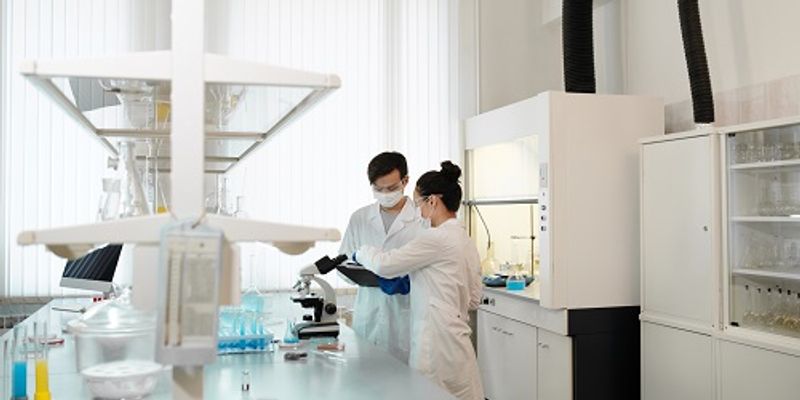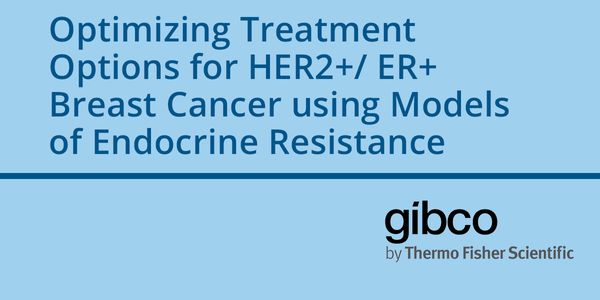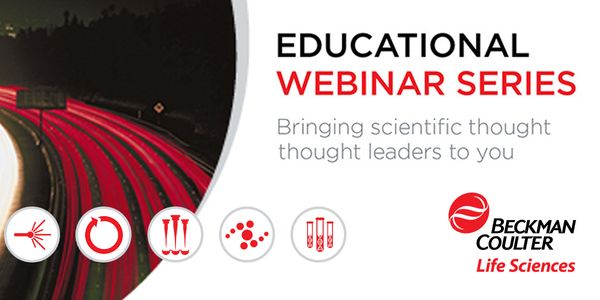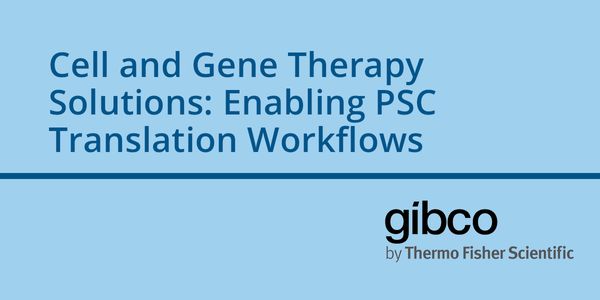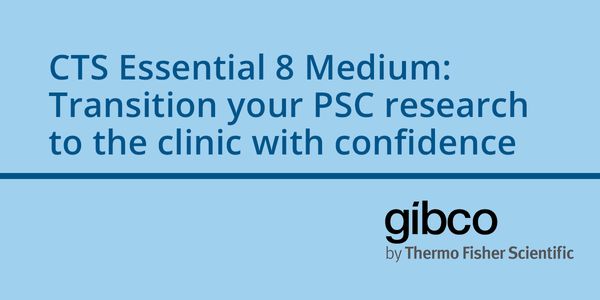Gene and Cell Therapy
With the goal of treating and curing disease, gene and cell therapy provide treatment by means of altering a person's genetic code and transferring live cells to improve symptoms and reduce levels of disease-causing proteins.
-
JAN 31, 2019 | 7:30 AMProdrugs are harmless in their native state, as they are not targeted by human enzymes. But they can be converted into highly toxic compounds (the “drug”) by viral or bacterial en...JAN 31, 2019 | 6:00 AMAmbrx’s mammalian expression platform (EuCODE™) enables non-native amino acids (nnAAs) through an expanded genetic code to both generate novel bio-therapeutics and to optimize the...JAN 29, 2019 | 9:00 AMDATE: January 29. 2019TIME: 09:00am PST, 12:00pm EST In healthy tissue, a reservoir of stem cells gives rise to non-stem cells while simul...JAN 15, 2019 | 12:00 AMDATE: January 15, 2018TIME: 4:00pm SGTPThere is a clear call to automate manufacturing for cell and gene therapy products, but when should you automate? In this session, we...DEC 13, 2018 | 9:00 AMDATE: December 13 15,2018TIME: 09:00am PST, 12:00pm EST Breast cancers are classified into three main subtypes according to their receptor status: estrogen receptor-positive...DEC 12, 2018 | 8:00 AMDATE: December 012, 2018TIME: 08:00 PSTImmunotherapy is a powerful treatment that harnesses the body’s immune system in the fight against cancer. With optimized cell therapy,...DEC 06, 2018 | 9:00 AMDATE: December 6, 2018TIME: 9:00am PST, 12:00pm EST Induced pluripotent stem cells (iPSC) intended for translational applications need to be of...DEC 06, 2018 | 7:00 AMDATE: December 06, 2018TIME: 7:00AM PSTHigh-throughput confocal microscopy has changed the way drug screening can be performed, by enabling the detection of single-cell pheno...NOV 15, 2018 | 10:30 AMCervical cancer is the 4th most common cancer worldwide with 528,000 new cases and 266,000 deaths every year. It is also the only cancer 100% preventable. It has been extensively proved, that...Speaker: Chris Meijer, MD, PhDNOV 15, 2018 | 2:00 AMIn contrast to autologous cell therapies, allogeneic therapies do not require collection of starting material from patients and could; be manufactured in larger batches, be made available &ld...NOV 14, 2018 | 9:00 AMWith significant decrease in the cost of sequencing in numerous commercial as well as cancer center–driven initiatives, genomic profiling is increasingly becoming routine across multipl...Speaker: Bing Zhou, PhDNOV 06, 2018 | 12:00 AMThe last decade has seen a significant shift in the way that mammalian cells are used in biomedical science. Researchers are increasingly turning from simple, reductionist recombinant cells t...OCT 30, 2018 | 8:00 AMDATE: October 30, 2018TIME: 8:00am PDT, 11:00am EDT Does your PSC medium support cell therapy? In this webinar, learn about Cell Therapy Systems™ (CTS...OCT 11, 2018 | 1:30 PMAs the most common female malignancy, breast cancer is the most likely reason that a woman will die of cancer around the world. Breast cancer mortality has dropped in the U.S. by 35% since 19...Speaker: Benjamin Anderson, MDOCT 11, 2018 | 1:30 PMRecent work has identified epigenomic features of distal regulatory elements to be dynamic and defining indicators of cellular specification and transformation. Of particular relevance is our...Speaker: Martin Hirst, PhDOCT 11, 2018 | 12:00 PMLung cancer is the leading cause of cancer-related mortality worldwide. Large-scale sequencing studies have revealed the complex genomic landscape of NSCLC and genomic differences between lun...Speaker: Nicholas McGranahan, PhDOCT 11, 2018 | 12:00 PMAlthough targeted therapies often elicit profound initial patient responses, these effects are transient due to residual disease leading to acquired resistance. How tumors transition between...OCT 11, 2018 | 10:30 AMTwo projects looking at novel approaches to targeting inflammatory breast cancer will be presented. Inflammatory breast cancer (IBC) is a unique, understudied, and most lethal subtype account...Speaker: Kevin Williams, PhDOCT 11, 2018 | 10:30 AMAntibodies are extremely valuable and ubiquitous tools in life science research, but in spite of their widespread use in immunoassays over the past several decades, there is still a lack of u...Speaker: Chandra Mohan, PhDOCT 11, 2018 | 9:00 AMIn the last two decades, large amount of next-generation sequencing (NGS) and -omics data has been generated in the field of immuno-oncology. Generating hypotheses by analyzing hundreds if no...Speaker: Devendra Mistry, PhDOCT 11, 2018 | 9:00 AMThe oncogenic transcription factor c-MYC (MYC) is deregulated, and often overexpressed, in more than 50% of cancers. MYC deregulation is associated with poor prognosis and aggressive disease,...Speaker: Jason De Melo, PhDOCT 11, 2018 | 7:30 AMIn the past two decades a small number of infrequently dividing cells have been proposed as the source of multi-drug resistance during cancer treatment. These cells identified by their expres...Speaker: Krastan Blagoev, PhDOCT 11, 2018 | 6:00 AMPacBio Sequencing simultaneously provides long sequence reads, high consensus accuracy, minimal sequence bias, and methylation detection. I will highlight new advances and updates on applying...Speaker: Jonas Korlach, PhDOCT 10, 2018 | 1:30 PMSome Abstract...Speaker: Benjamin Haibe-Kains, PhD
JAN 31, 2019 | 7:30 AM
Prodrugs are harmless in their native state, as they are not targeted by human enzymes. But they can be converted into highly toxic compounds (the “drug”) by viral or bacterial en...
JAN 31, 2019 | 6:00 AM
Ambrx’s mammalian expression platform (EuCODE™) enables non-native amino acids (nnAAs) through an expanded genetic code to both generate novel bio-therapeutics and to optimize the...
JAN 29, 2019 | 9:00 AM
DATE: January 29. 2019TIME: 09:00am PST, 12:00pm EST In healthy tissue, a reservoir of stem cells gives rise to non-stem cells while simul...
JAN 15, 2019 | 12:00 AM
DATE: January 15, 2018TIME: 4:00pm SGTPThere is a clear call to automate manufacturing for cell and gene therapy products, but when should you automate? In this session, we...
DEC 13, 2018 | 9:00 AM
DATE: December 13 15,2018TIME: 09:00am PST, 12:00pm EST Breast cancers are classified into three main subtypes according to their receptor status: estrogen receptor-positive...
DEC 12, 2018 | 8:00 AM
DATE: December 012, 2018TIME: 08:00 PSTImmunotherapy is a powerful treatment that harnesses the body’s immune system in the fight against cancer. With optimized cell therapy,...
DEC 06, 2018 | 9:00 AM
DATE: December 6, 2018TIME: 9:00am PST, 12:00pm EST Induced pluripotent stem cells (iPSC) intended for translational applications need to be of...
DEC 06, 2018 | 7:00 AM
DATE: December 06, 2018TIME: 7:00AM PSTHigh-throughput confocal microscopy has changed the way drug screening can be performed, by enabling the detection of single-cell pheno...
NOV 15, 2018 | 10:30 AM
Cervical cancer is the 4th most common cancer worldwide with 528,000 new cases and 266,000 deaths every year. It is also the only cancer 100% preventable. It has been extensively proved, that...
Speaker:
Chris Meijer, MD, PhD
NOV 15, 2018 | 2:00 AM
In contrast to autologous cell therapies, allogeneic therapies do not require collection of starting material from patients and could; be manufactured in larger batches, be made available &ld...
NOV 14, 2018 | 9:00 AM
With significant decrease in the cost of sequencing in numerous commercial as well as cancer center–driven initiatives, genomic profiling is increasingly becoming routine across multipl...
Speaker:
Bing Zhou, PhD
NOV 06, 2018 | 12:00 AM
The last decade has seen a significant shift in the way that mammalian cells are used in biomedical science. Researchers are increasingly turning from simple, reductionist recombinant cells t...
OCT 30, 2018 | 8:00 AM
DATE: October 30, 2018TIME: 8:00am PDT, 11:00am EDT Does your PSC medium support cell therapy? In this webinar, learn about Cell Therapy Systems™ (CTS...
OCT 11, 2018 | 1:30 PM
As the most common female malignancy, breast cancer is the most likely reason that a woman will die of cancer around the world. Breast cancer mortality has dropped in the U.S. by 35% since 19...
Speaker:
Benjamin Anderson, MD
OCT 11, 2018 | 1:30 PM
Recent work has identified epigenomic features of distal regulatory elements to be dynamic and defining indicators of cellular specification and transformation. Of particular relevance is our...
Speaker:
Martin Hirst, PhD
OCT 11, 2018 | 12:00 PM
Lung cancer is the leading cause of cancer-related mortality worldwide. Large-scale sequencing studies have revealed the complex genomic landscape of NSCLC and genomic differences between lun...
Speaker:
Nicholas McGranahan, PhD
OCT 11, 2018 | 12:00 PM
Although targeted therapies often elicit profound initial patient responses, these effects are transient due to residual disease leading to acquired resistance. How tumors transition between...
OCT 11, 2018 | 10:30 AM
Two projects looking at novel approaches to targeting inflammatory breast cancer will be presented. Inflammatory breast cancer (IBC) is a unique, understudied, and most lethal subtype account...
Speaker:
Kevin Williams, PhD
OCT 11, 2018 | 10:30 AM
Antibodies are extremely valuable and ubiquitous tools in life science research, but in spite of their widespread use in immunoassays over the past several decades, there is still a lack of u...
Speaker:
Chandra Mohan, PhD
OCT 11, 2018 | 9:00 AM
In the last two decades, large amount of next-generation sequencing (NGS) and -omics data has been generated in the field of immuno-oncology. Generating hypotheses by analyzing hundreds if no...
Speaker:
Devendra Mistry, PhD
OCT 11, 2018 | 9:00 AM
The oncogenic transcription factor c-MYC (MYC) is deregulated, and often overexpressed, in more than 50% of cancers. MYC deregulation is associated with poor prognosis and aggressive disease,...
Speaker:
Jason De Melo, PhD
OCT 11, 2018 | 7:30 AM
In the past two decades a small number of infrequently dividing cells have been proposed as the source of multi-drug resistance during cancer treatment. These cells identified by their expres...
Speaker:
Krastan Blagoev, PhD
OCT 11, 2018 | 6:00 AM
PacBio Sequencing simultaneously provides long sequence reads, high consensus accuracy, minimal sequence bias, and methylation detection. I will highlight new advances and updates on applying...
Speaker:
Jonas Korlach, PhD
OCT 10, 2018 | 1:30 PM
Some Abstract...
Speaker:
Benjamin Haibe-Kains, PhD
